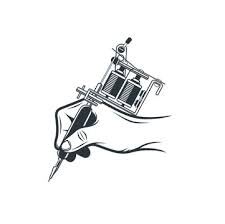Choosing the right tattoo needle for line work is crucial to achieving clean, precise, and professional-looking tattoos.
Whether you’re a seasoned tattoo artist or just starting, understanding the different needle types and sizes can make a significant difference in the quality of your work.
Line work tattoos, known for their detailed and intricate designs, demand specific needle configurations to ensure the lines are smooth, consistent, and accurately represent the intended artwork.
This article explores the various aspects of selecting the appropriate needle size for line work tattoos.
From understanding the basic needle types to diving into the specifics of needle configurations and their applications, we aim to provide comprehensive guidance.
Whether you’re aiming for delicate fine lines or bold outlines, this guide will help you make informed decisions, enhancing your tattooing skills and ensuring client satisfaction.
Understanding Tattoo Needle Basics
Tattoo needles are made up of multiple small needles grouped together and soldered onto a needle bar.
These needle groups come in various shapes and sizes, each suited for different tattooing techniques. The primary types of needle groupings include liners, shaders, and magnums.
read also: Are Line Work Tattoos Easier to Remove? [What You Must Know]
Liners
Liner needles are designed specifically for creating clean, precise lines.
They consist of needles grouped tightly together in a circular formation, allowing for consistent ink flow and sharp lines.
Liner needles are essential for outlining and detailing in tattoos.
Shaders
Shader needles are configured to create shading and gradient effects in tattoos.
They can be grouped in circular, flat, or magnum formations. While not typically used for line work, shaders are vital for adding depth and dimension to a tattoo.
Magnums
Magnum needles are used for filling in larger areas and creating smooth shading.
They come in two main types: flat magnums and curved magnums. Although they are not used for line work, understanding their function is crucial for comprehensive tattoo artistry.
Factors to Consider When Choosing Needle Size for Line Work
When selecting the right needle size for line work, several factors must be considered to ensure optimal results.
These include the desired line thickness, the complexity of the design, and the client’s skin type.
Line Thickness
The thickness of the line you want to achieve will largely determine the needle size you select. Fine lines require smaller needle sizes, while thicker, bold lines necessitate larger needles.
For example, a 3-round liner (3RL) is ideal for delicate lines, while a 9-round liner (9RL) works well for bolder outlines.
Complexity of Design
Intricate designs with a lot of detail require smaller needle sizes to capture the fine elements accurately.
Conversely, simpler designs with broad strokes can be executed with larger needles.
Client’s Skin Type
Skin type can affect how the ink is deposited and how the tattoo heals.
Clients with tougher, more resilient skin may benefit from slightly larger needles, while those with sensitive or thin skin might require smaller needles to minimize trauma and ensure smooth lines.
Common Needle Sizes for Line Work
Tattoo needles are identified by a combination of numbers and letters that indicate their configuration and size.
For line work, round liner needles are the most commonly used. Here are some popular needle sizes for line work:
1 Round Liner (1RL)
The 1RL needle is a single needle used for ultra-fine lines and intricate details. It is perfect for delicate work but requires a steady hand and precision to avoid inconsistencies.
3 Round Liner (3RL)
The 3RL needle consists of three needles grouped together. It is versatile and commonly used for fine lines and detailed work. It provides more stability than the 1RL, making it a popular choice among artists.
5 Round Liner (5RL)
The 5RL needle includes five needles in a tight circular formation. It is suitable for medium-thickness lines and is often used for standard outlines. It offers a balance between detail and boldness.
7 Round Liner (7RL)
The 7RL needle comprises seven needles, making it ideal for thicker lines and bold outlines. It is commonly used for larger designs where strong, prominent lines are required.
9 Round Liner (9RL)
The 9RL needle has nine needles and is used for very thick lines and heavy outlines. It is perfect for creating strong, defined borders in larger tattoo designs.
Matching Needle Size to Tattoo Design
Choosing the right needle size involves matching the needle configuration to the specific requirements of the tattoo design. Here’s how to do it effectively:
Fine Line Tattoos
For tattoos with fine lines and intricate details, such as delicate script or small geometric shapes, smaller needles like the 1RL or 3RL are ideal. These needles allow for precision and control, ensuring that the lines are crisp and clean.
Standard Line Work
For standard line work, including typical outlines and moderately detailed designs, the 5RL needle is a go-to choice. It provides a good balance between control and boldness, making it versatile for various styles.
Bold Outlines
For tattoos that require bold, prominent outlines, such as traditional or neo-traditional designs, larger needles like the 7RL or 9RL are appropriate. These needles can create thick, solid lines that stand out and provide a strong visual impact.
Tips for Using Line Work Needles
Using the correct needle size is just the beginning. Here are some tips to ensure the best results when working with line work needles:
Maintain Consistent Hand Pressure
Consistency is key when creating clean lines. Ensure that you apply even pressure throughout the tattooing process to avoid irregularities in the lines.
Adjust Needle Depth
Adjusting the needle depth is crucial for achieving the desired line thickness and avoiding skin damage. Generally, the needle should penetrate the skin at a depth of 1-2 millimeters.
Use the Right Machine Speed
The speed of your tattoo machine should be adjusted according to the needle size and the specific task. Slower speeds are better for detailed work with smaller needles, while higher speeds can be used for larger needles and bolder lines.
Practice Proper Aftercare
Educate your clients on proper aftercare to ensure the tattoo heals well and retains its crisp lines. This includes keeping the tattoo clean, avoiding direct sunlight, and applying recommended ointments.
Understanding Needle Configuration and Code
Tattoo needle codes can be confusing for beginners. Here’s a breakdown to help you understand how to read them:
Needle Diameter
The first number in the needle code often indicates the diameter of the individual needles. Common diameters include #8 (0.25mm), #10 (0.30mm), and #12 (0.35mm). The larger the number, the thicker the needle.
Number of Needles
The second part of the code indicates the number of needles in the group. For example, 3RL means three needles grouped in a round liner configuration.
Needle Grouping
The letters in the code describe the needle grouping. RL stands for round liner, RS for round shader, F for flat, and M for magnum.
Conclusion
Selecting the right tattoo needle size for line work is a critical step in achieving high-quality, professional tattoos.
By understanding the different needle types, sizes, and configurations, you can make informed choices that enhance your artistry and ensure client satisfaction.
Whether you’re working on fine line tattoos, standard outlines, or bold designs, choosing the appropriate needle size and following best practices will help you create beautiful, precise line work.
Remember, the key to mastering line work is practice, attention to detail, and a thorough understanding of the tools at your disposal.
With the right knowledge and techniques, you can elevate your tattooing skills and produce stunning, clean, and precise tattoos that stand the test of time.

I’m Tommy Hanks, a professional tattoo artist with over a decade of experience under my belt.
I’ve always had a passion for art, and tattooing has become my favorite medium for expressing creativity.
I own and operate a successful tattoo studio, where I get to create intricate designs and connect with a diverse range of clients.
In addition to my work in the studio, I run a blog called taggrs.com.
Through my blog, I share my experiences, insights into the latest tattoo trends, and tips for both aspiring tattoo artists and enthusiasts.
Tattooing is more than just a job for me; it’s a lifelong journey, and I love being able to share that journey with others.

